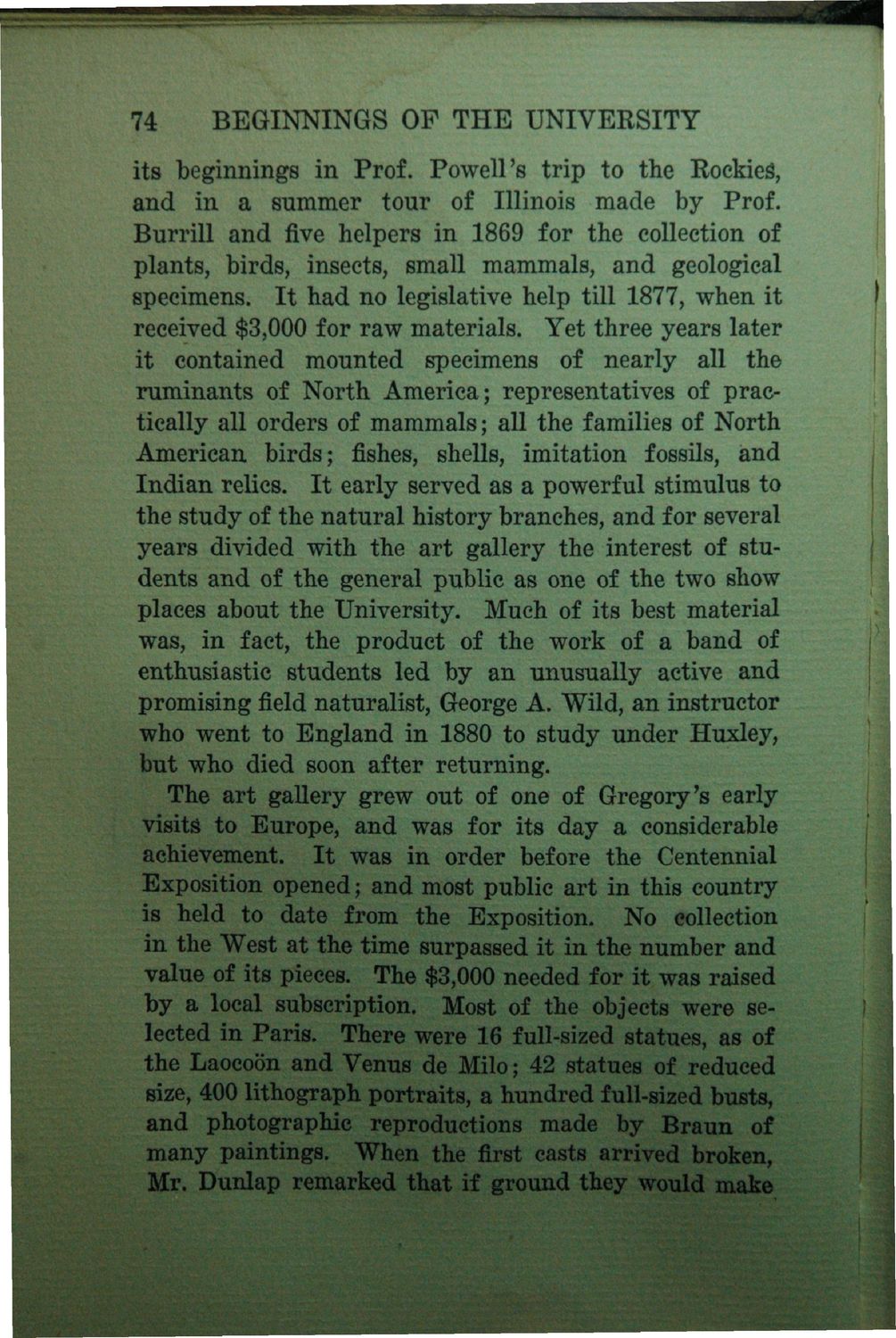| |
| |
Caption: Book - History of the University (Nevins)
This is a reduced-resolution page image for fast online browsing.

EXTRACTED TEXT FROM PAGE:
74 BEGINNINGS OP THE UNIVERSITY its beginnings in Prof. Powell's trip to the Rockies, and in a summer tour of Illinois made by Prof. Burrill and five helpers in 1869 for the collection of plants, birds, insects, small mammals, and geological specimens. It had no legislative help till 1877, when it received $3,000 for raw materials. Yet three years later it contained mounted specimens of nearly all the ruminants of North America; representatives of practically all orders of mammals; all the families of North American birds; fishes, shells, imitation fossils, and Indian relics. It early served as a powerful stimulus to the study of the natural history branches, and for several years divided with the art gallery the interest of students and of the general public as one of the two show places about the University. Much of its best material was, in fact, the product of the work of a band of enthusiastic students led by an unusually active and promising field naturalist, George A. Wild, an instructor who went to England in 1880 to study under Huxley, but who died soon after returning. The art gallery grew out of one of Gregory's early visits to Europe, and was for its day a considerable achievement. It was in order before the Centennial Exposition opened; and most public art in this country is held to date from the Exposition. No collection in the West at the time surpassed it in the number and value of its pieces. The $3,000 needed for it was raised by a local subscription. Most of the objects were selected in Paris. There were 16 full-sized statues, as of the Laocoon and Venus de Milo; 42 statues of reduced size, 400 lithograph portraits, a hundred full-sized busts, and photographic reproductions made by Braun of many paintings. When the first casts arrived broken, Mr. Dunlap remarked that if ground they would make
| |